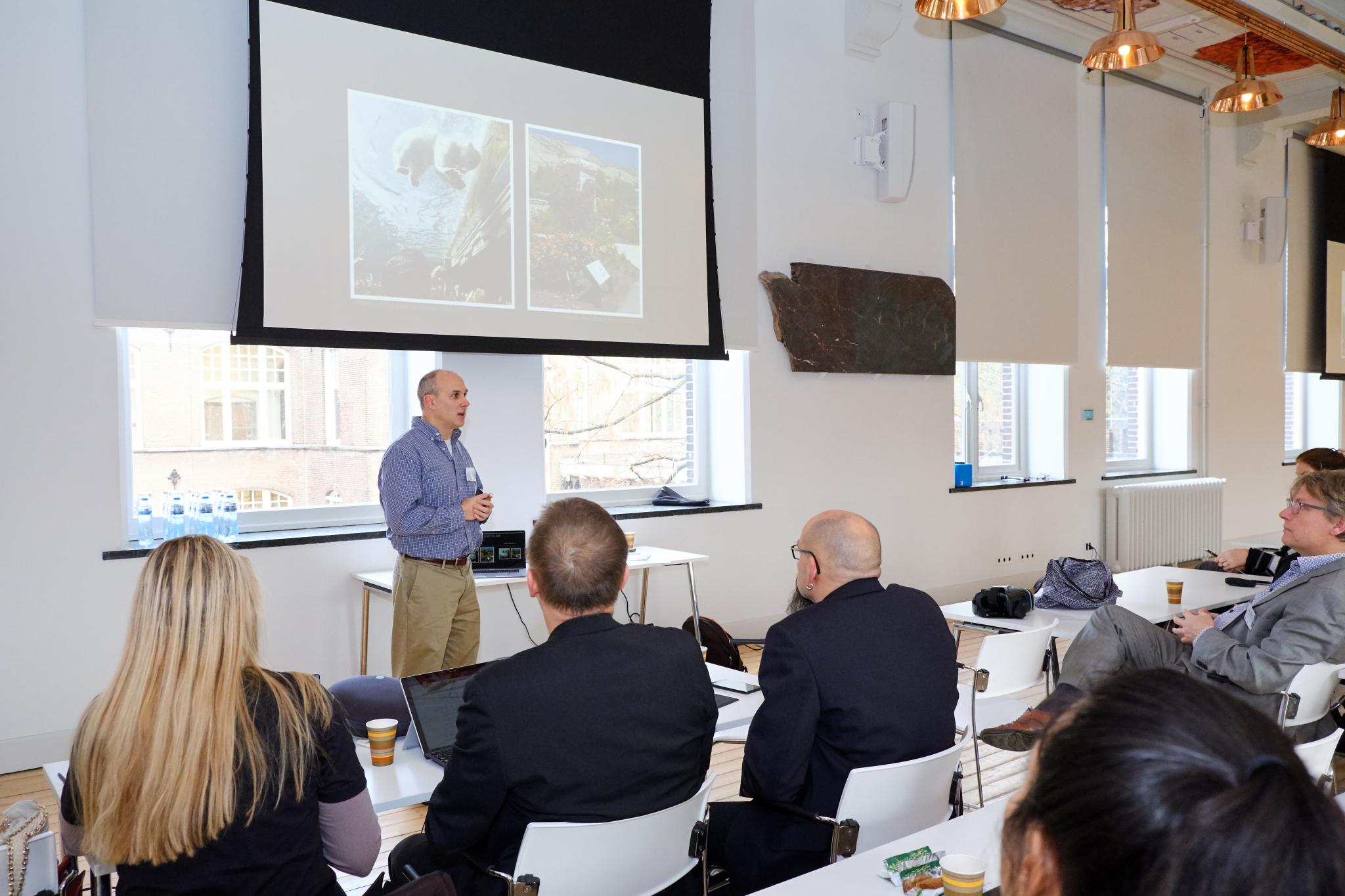Eric Klopfer: Teaching and learning by playing and creating augmented reality games
Keynote speaker is MIT professor Eric Klopfer, author of the book Augmented Learning. His research focuses on serious gaming and simulations in learning. The question is: ‘How do we use the real world in learning and how can we improve and enrich this with virtual objects? Before giving answers he shares with the audience the components he thinks are important to successful use of games in education.
Edutainment (‘Where play is the reward for learning’) is useless in learning; a game without a relation with learning material only serves as a reward in itself and if you skip the reward (game) the learner’s motivation disappears. This principle is called ‘chocolate covered broccoli’: A child will eat the broccoli but will not be motivated by the chocolate to do this more often. Klopfer’s example is the game called ‘Math Blaster’: it is fun to do but has nothing to do with mathematical problems, whereas the goal is to give the learner a learning experience by playing the game. Hereto you should look for a ‘pleasantly frustrating experience’; gaming is extremely suitable for this, as long as it is based on good design principles, Klopfer emphasizes.
The way and extent in which the game is structured has a huge effect on the enjoyment of the learner. Eric gives five design principles:
- The learner should be able to make interesting and relevant choices in the game
- These choices should have consequences in the game
- The game has to have clear goals
- Visual feedback is an important stimulator
- The system/model of the game should be clear and coherent.
To keep a game interesting you should consider the ‘four freedoms of play‘ when designing a game: players should have the opportunity to fail, experiment, adopt several identities and control the extend of energy they put in the game.

The use of augmented reality in educational games provides chances to combine social and sociological aspects with science. Making the connection between the real and the virtual world is the main challenge. How do you reinforce the learning experience with virtual elements and how do you prevent these elements to distract the learner from the learning materials? To design AR games MIT developed the Taleblazer platform. Eric shows an example of an AR game in an open air museum where players go through the game at their own pace but interact with each other. By using a positioning tool virtual elements appear at the right moment. When GPS cannot be used as positioning tool, iBeacons is used. At the end of his presentation Klopfer pleas for learners to make their own AR games, a nice suggestion!
What motivates the learner to play the game in the first place?, a member of the audience would like to know. ‘Two elements are key’, according to Klopfer: ‘1. a narrative (e.g. about empowerment, rebellion, depending on the age of the player) and 2: a series of interesting problems to keep them going.’
Another question was: How can we use prior knowledge in games? This turns out to be a real challenge. Klopfer: ‘This would be an important next step.’
